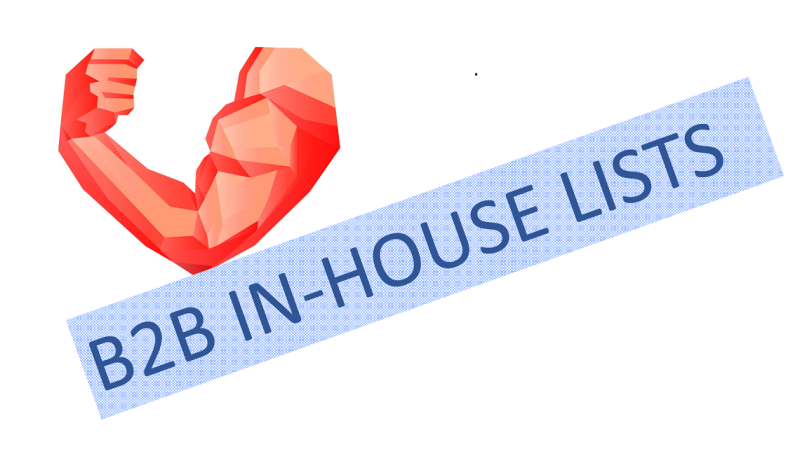The Top 4 Elements for a Podium Finish

Over Labor Day weekend I had the opportunity to drive my race car on my favorite track, Virginia International Raceway. The weather was perfect in spite of Hurricane Hermine barreling along just 20 miles south of us and the car performed well making it a most enjoyable weekend. By now you’re probably wondering what any of this has to do with B2B marketing. A lot actually! In this post I’ll discuss the top four elements you need to ensure your B2B demand generation results in a podium finish.
Prepped for high performance
Before I head to the track there’s a lot of preparation required to help ensure we have a fun and safe weekend of high performance driving. I inspect the car for any safety or mechanical issues, purchase gas, gather spare parts, and possibly change the oil, brake pads, or tires. Then there’s the hotel reservations, event registration, planning when to get the trailer from storage and load the car, and purchasing track insurance. Yes, I have a very long checklist to make sure nothing is forgotten.
Successful B2B demand generation requires a lot of preparation also. Before the launch of any campaigns you need to be “race prepped” with target personas, a mapped out buyer’s journey, appropriate content for different stages in that journey, and have your marketing engine (website, online and offline channels, marketing automation, and analytics) tuned up and ready. Your content calendar may have some holes in it, but you should have some “spare” content on hand and a plan for producing new content going forward since this is the “fuel” for demand generation.
Think about what else might be needed and what might change. Not having a set of spare tires or brake pads at the track can ruin a weekend and waste the investment made in being there. What can you prepare ahead of time to respond more quickly? Close alignment with sales can provide early insight into customers and sales enablement needs, and having relationships with outside resources for market research, content development, design, etc. can help you implement backup plans or new tactics, make you more nimble, and reduce risk.
Strategic and integrated tactics win the race

The courses I drive are road courses, typically 2 to 3 miles long with many turns and elevation changes. So unlike NASCAR’s oval tracks, I can’t see the whole course at once and it’s not just left turns. Before going to a new track I’ll watch video and study a track map to learn “the line” which is the best way to take each turn for the fastest lap times. Although each individual turn has a “best way” through it, it’s better to take an integrated approach to get the fastest overall lap times. An integrated approach may sacrifice speed through one turn to optimize a more important turn that follows. For example, turning in later and slower for a turn so that upon exit the car is set up perfectly to enter the next more important turn.
Modern B2B marketers have more channel choices than ever for demand generation, but it takes a strategic and integrated approach to beat the competition. Exhibiting at a trade show may generate demand, but integrating that trade show presence with social media, email campaigns, direct mail, and webinars will help you generate higher quality leads faster.
Consider which marketing tactics integrated together will deliver the fastest results for the overall strategy and resources available. According to the B2B Content Marketing 2016: Benchmarks, Budgets, and Trends – North America report from the Content Marketing Institute and MarketingProfs 75% of B2B marketers rated in-person events as the most effective tactic while infographics and on-line presentations came in last at only 58%.
The report also shows that B2B marketers use on average 13 different tactics and 6 different social media platforms with LinkedIn(66%), Twitter(55%), and YouTube(51%) being the most effective platforms. If your target prospects don’t use Facebook for investigating solutions to their business problems, then why devote resources to it? An integrated marketing plan might “sacrifice” Facebook while putting more resources into LinkedIn, YouTube, email campaigns and webinars. Running fewer email campaigns may actually reduce unsubscribes and increase click through rates and engagement with prospects.
A data dashboard for midrace adjustments and a strong finish

With preparation and an integrated strategy in place, you’ll need to gather data so you can assess and make course adjustments as you go along. During a race the team measures tire pressures, engine and transmission temperatures, fuel levels and lap times, and gathers weather data to help drivers and crew make adjustments that improve performance. Teams also relay competitor information to help determine when to make pit stops and what times to beat to win the race. Without this kind of data, the team is driving blind. Making more pit stops than necessary or not changing tires soon enough can lose the race.
Measuring demand generation efforts helps B2B marketers know whether they are meeting their goals, what’s working and not working, and should provide an indication of where to allocate resources and help justify more budget. With the tools and technology available to marketers today such as marketing automation and Google Analytics, there’s really no excuse for not being able to gather and measure demand generation efforts.
The bigger challenge now is learning what to measure and how to analyze, adjust and optimize to keep improving your demand generation capabilities. The B2B Content Marketing Report indicated the top 3 most important metrics for B2B marketers were sales lead quality (87%), sales (84%), and higher conversion rates (82%). Creating a demand generation dashboard with meaningful metrics will ensure you’re not driving blind and take you to a strong finish.
B2B demand generation is an enduro, not a sprint

You can’t win the race if you don’t finish. Race cars have more robust parts and extra cooling to withstand extreme conditions for longer periods. Your street car with the same horsepower might make a few laps around, but would likely lose brakes, wear out tires, or break a part before finishing the race.
B2B demand generation, contrary to the sales team’s quarterly or even monthly sprints, is more like an enduro race that lasts several quarters if not a fiscal year or more. Sure there may be twists and turns that require you to adjust your tactics, but finding ways to consistently engage your prospects throughout their buyers’ journey is what wins the race. Stopping and starting tactics midstream or doing one-off campaigns, be they online or offline, won’t make much, if any, impact. Make sure you’ve got the resources and team in place to make it through several quarters at least. That way you’ll have enough data to learn what works and make educated decisions about future demand generation strategy and tactics.
 B2B marketers continue to rely heavily on email for effective lead generation and growing revenues. According to results from the B2B Content Marketing: 2017 Benchmarks, Budgets and Trends – North America report, email is the number one content distribution channel used by 93% of marketers. This means you need a “strong” in-house marketing database or house list, one with complete and accurate contact information.
B2B marketers continue to rely heavily on email for effective lead generation and growing revenues. According to results from the B2B Content Marketing: 2017 Benchmarks, Budgets and Trends – North America report, email is the number one content distribution channel used by 93% of marketers. This means you need a “strong” in-house marketing database or house list, one with complete and accurate contact information.


